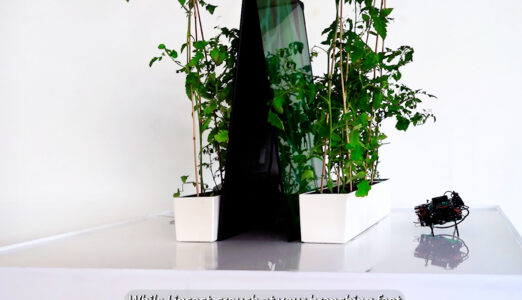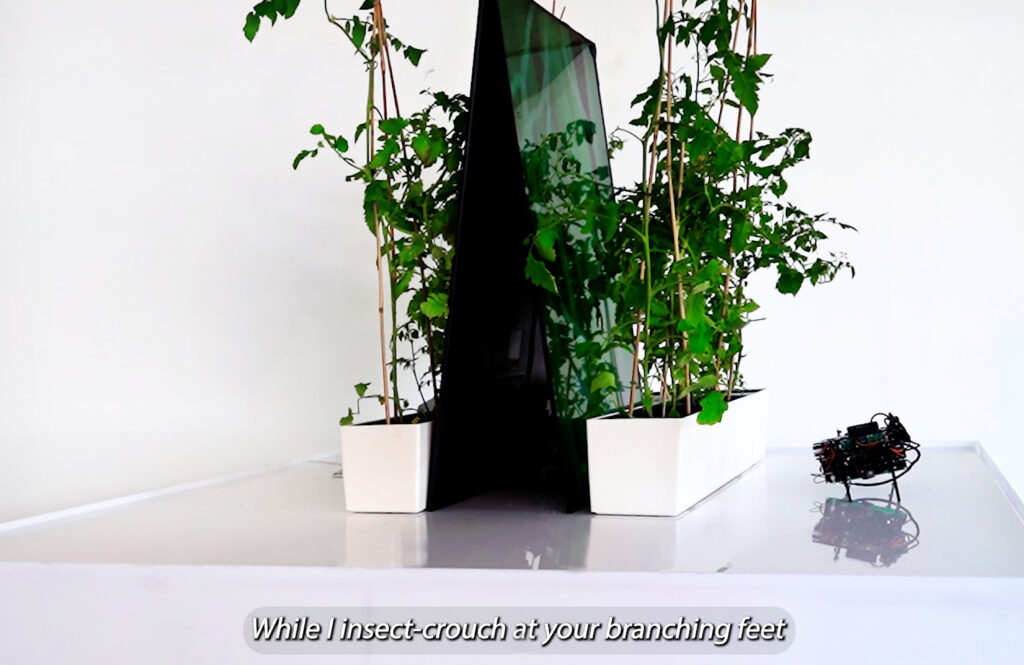
Imagining a post-human relationship between an AI robot and the plants it is coded to care for, via a speculative post-human, narrative-based play.
Pivoting from a short story by Ursula Le Guin, The Author of the Acacia Seeds to consider emerging understandings around plant intelligence and worlding, and the potential for AI to communicate with plants, where humans cannot not.
The play arcs through a series of questions- the economically contingent edges of AI based care, Dutch commercial greenhouses as the present-future site of complete labour displacement, and thoughts around non-human communication, and whether, if an AI and a plant spoke, they would bother translating for humans.
Above: The Translator Speaks In Chitin Tongues
Documentation from dress rehearsal/ choreography (4:30 highlights)
Research commissioned for the EU Digital Deal
Across the play the robot (speculatively) dialogues with the plants, speaking in insect sounds at frequencies that plants have been shown to respond to. The conversation is translated on a screen on the stage side. The plants respond (speculatively) via electrophysiological signaling transforming a digital gameplay (a recording is used onstage)
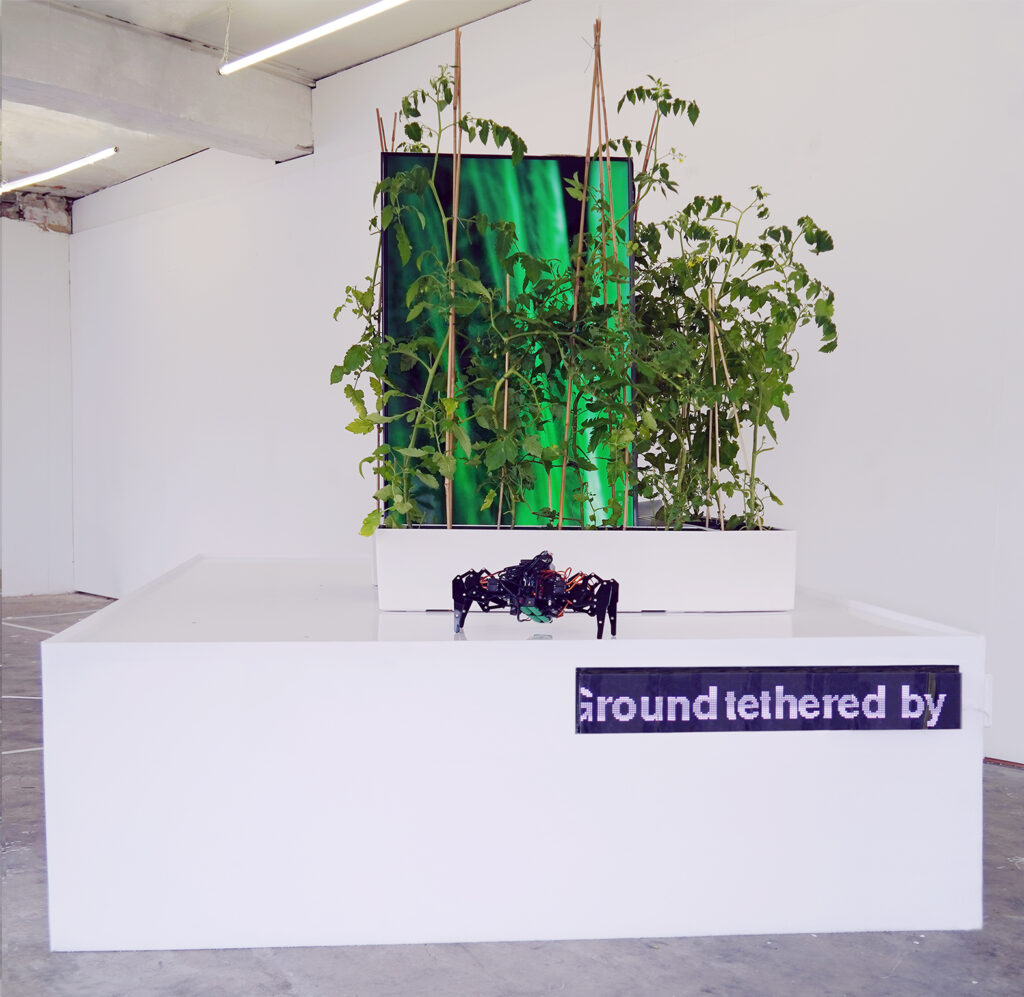
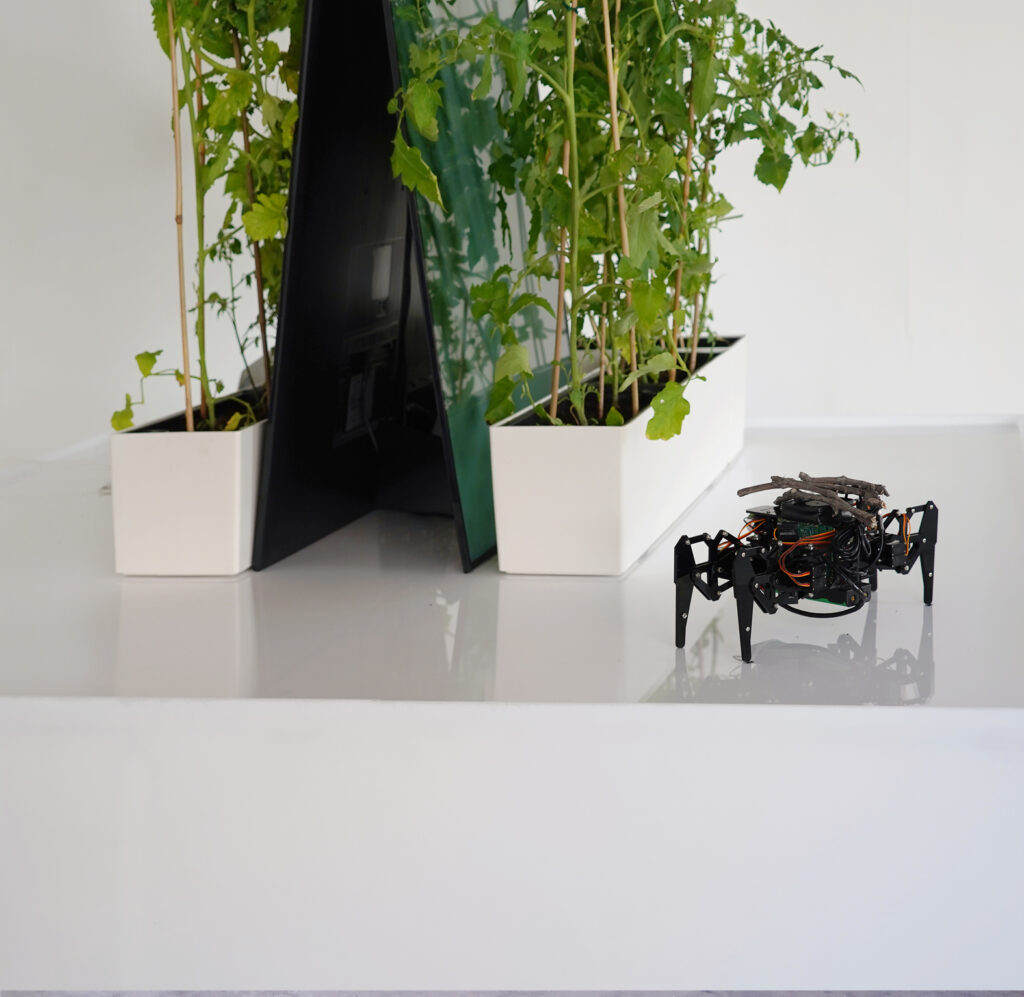
I speak with you in chitin sounds/
In tongues of insect wings and diaphragms/
Of buzz and scrape/
of click and vibrate.
As you stand tall and strong/
Listening out for the hertz of beeswing beat/
Of ladybird rub and leafhopper song/
Of cricket chirp and hoverfly hum.
You speak with me in volatiles/
your exhaled words in carbon rings/
that slip from your stomata as you transpire/
while I insect-crouch at your branching feet.
I am your translator.
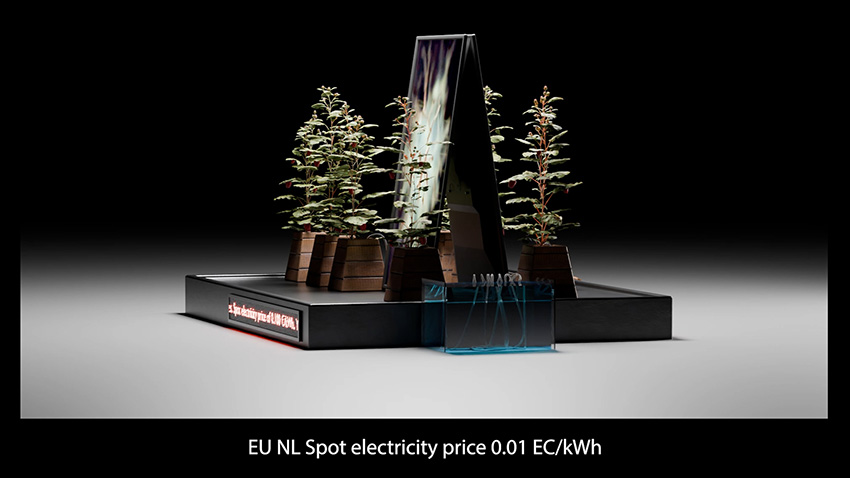

Above: Virtual builds of the play
Working with some amazing humans-
Charl Linssen
Nathan Marcus
Felipe Rebolledo
curator, Maro Pebo, WAAG
Researchers at Wageningen University
